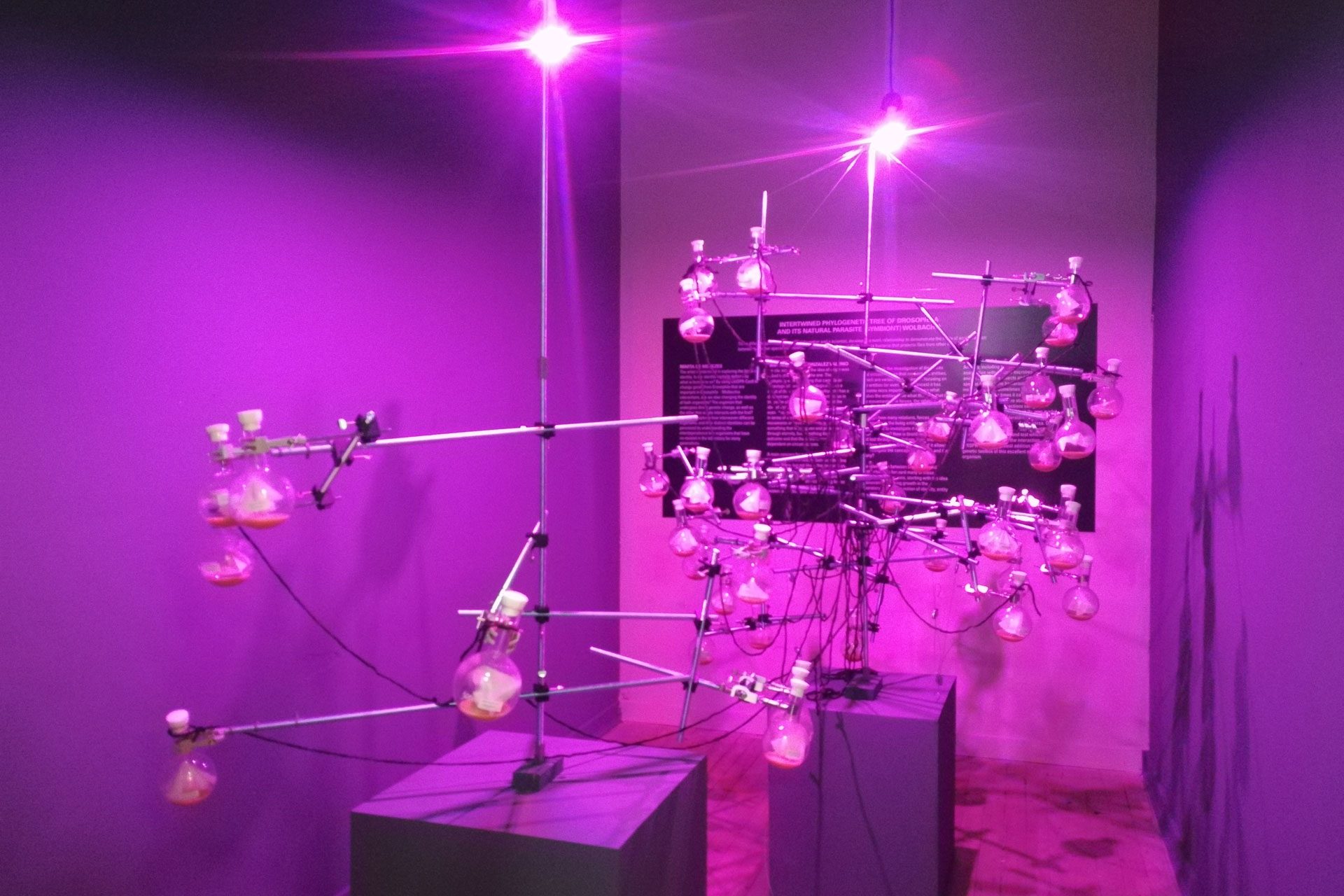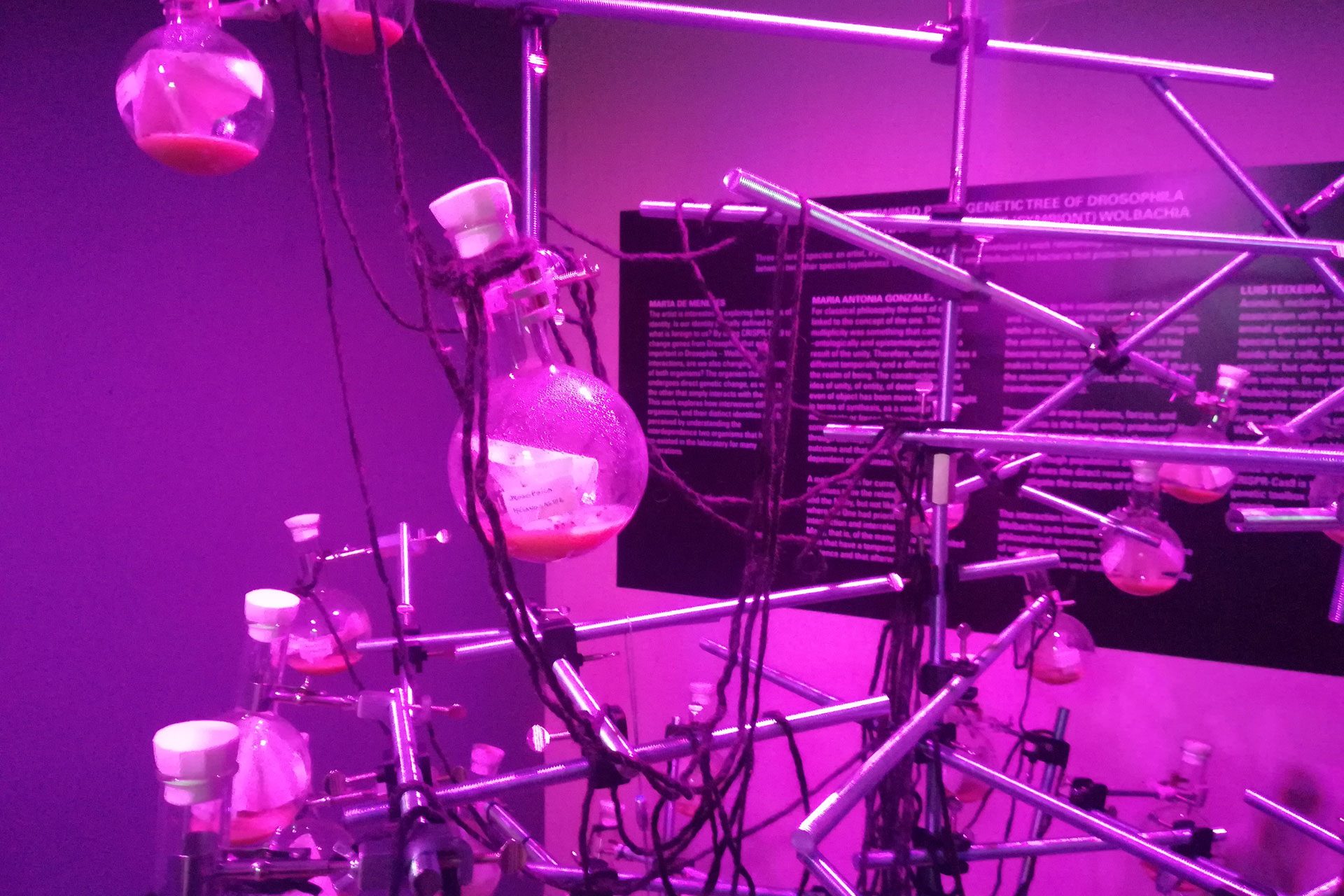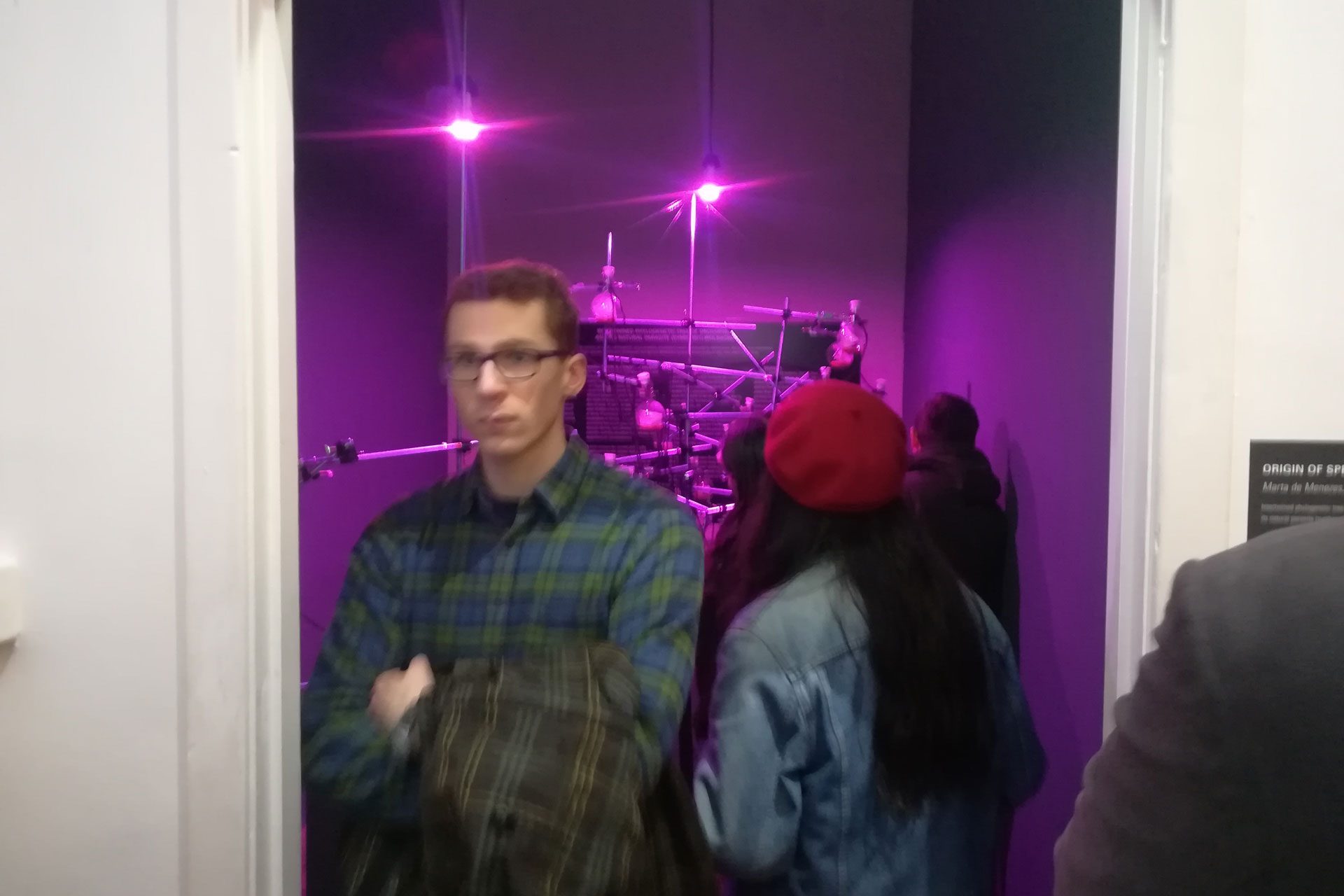Intertwined phylogenetic tree of Drosophila and its natural parasite (symbiont) Wolbachia.
Three different species: an artist, a philosopher and a scientist, developed a work relationship to demonstrate the limits of an interaction between two other species (symbionts): Drosophila (the fly) and Wolbachia (a bacteria that protects flies from other infections).
The artist is interested in exploring the limits of identity. Is our identity partially defined by what is foreign to us? By using CRISPR-Cas9 to change genes from Drosophila that are important in Drosophila – Wolbachia interactions, are we also changing the identity of both organisms? The organism that undergoes direct genetic change, as well as the other that simply interacts with the first? This work explores how interwoven different organisms, and their distinct identities can be perceived by understanding the interdependence two organisms that have co-existed in the laboratory for many generations.
Marta de Menezes
For classical philosophy the idea of origin was linked to the concept of the one. The multiplicity was something that came later –ontologically and epistemologically-, as a result of the unity. Therefore, multiplicity has a different temporality and a different status in the realm of being. The construction of the idea of unity, of entity, of determination and even of object has been more recently thought in terms of synthesis, as a result of certain movements or forces. The unity is not something that is just given and preserved through eternity, but something that is the outcome and that therefore is modifiable and dependent on circumstances.
A main concern for current philosophy continues to be the relation between the One and the Many, but not like in the former days, where the One had priority, but now as an intersection and interrelation of One and Many, that is, of the many conforming limited ones that have a temporal and relative existence and that afterwards disappear. This leads to the investigation of the forces and circumstances that conform the entities, which are variable, so instead of focusing on the entities (or even on substances) it has become more important to focus on what makes the entities to be what they are, that is, the movements, the forces, the relations, the transformations, etc.
Through how many relations, forces, and movements is the living entity produced? How is it possible to investigate it in theoretical and empirical ways? How is (bio)diversity gained and lost through populations and generations, and how does the direct research of it allows to investigate the concepts of the One and the Many?
The interaction between Drosophila and Wolbachia puts forward many of these philosophical questions, starting with the idea of environment (being growth in the laboratory) to the very notion of identity, entity and being.
Maria Antonia Gonzalez Valerio
Animals, including humans, live in close association with multiple microbes. Most animal species are insects and most insect species live with the bacterium Wolbachia inside their cells. Sometimes Wolbachia is parasitic but other times it can protect insects from viruses. In my lab we study Wolbachia-insect interactions using Drosophila melanogaster, a fruit fly, as a model system. We want to understand how Wolbachia affects the fly and vice-versa. Our approach to the problem includes genetically manipulating Drosophila and test which fly genes are important for the interaction. CRISPR-Cas9 is the latest addition to the genetic toolbox of this excellent model organism.
With thanks to:
Dr. Nuno Soares and Liliana Vieira @Instituto Gulbenkian de Ciência, Gulbenkian Foundation, Portugal.




